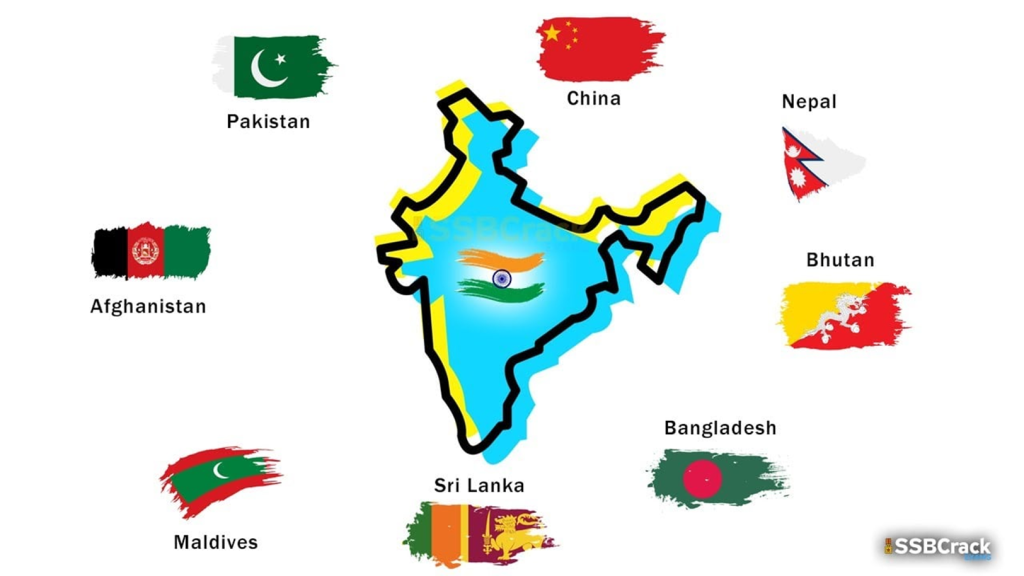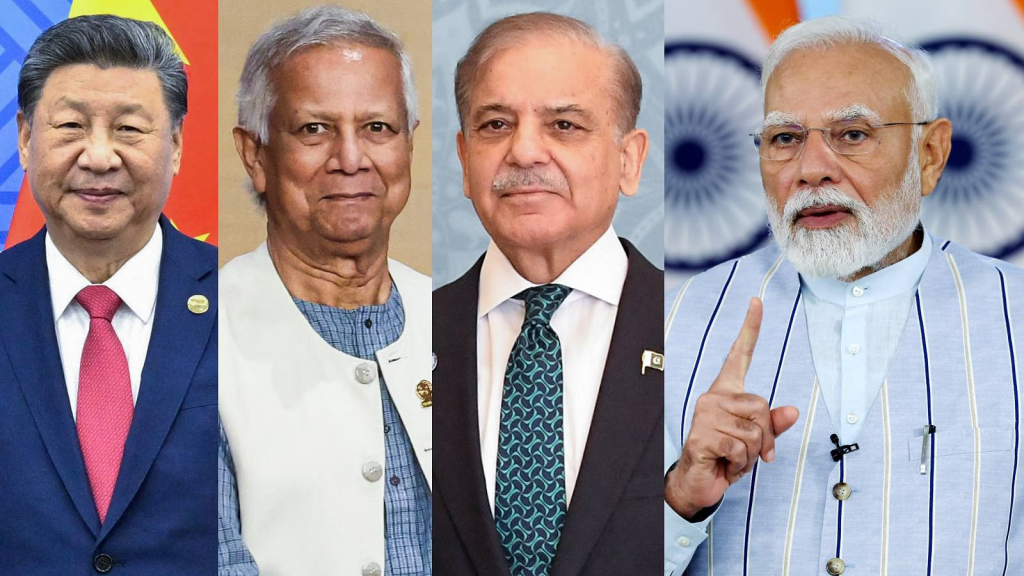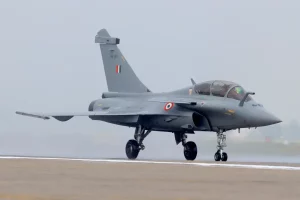The year 2025 witnessed a dramatic escalation in India–Pakistan tensions following a deadly terrorist attack in Pahalgam, Jammu & Kashmir, followed by India’s unprecedented military response—Operation Sindoor.
“New Terror Route? Pakistan Targeting India via Neighbouring Nations?”
As the regional security environment shifts, concerns are mounting over whether Pakistan is redirecting terrorism through India’s eastern and northern neighbors, notably in the context of rising incidents, multinational diplomacy like the SCO Summit, and evidence from drone attacks linked to groups like ULFA(I). This article examines the evolving threat landscape, highlighting the cross-border terror dynamics, the Bangladesh angle, and international responses.
Operation Sindoor and the Changing Battlefield
- April 22, 2025: A terrorist attack in Pahalgam, Jammu & Kashmir, killed 26 civilians. The Resistance Front (TRF) claimed responsibility; India blamed Pakistan for sponsoring the attack.
- May 7, 2025: India launched Operation Sindoor—precision missile strikes targeting terrorist infrastructure in Pakistan and Pakistan-administered Kashmir, especially Lashkar-e-Taiba and Jaish-e-Mohammad bases.
- Pakistan retaliated with mortar attacks on Jammu’s Poonch district, leading to high civilian casualties and infrastructural damage, including religious sites.
- The conflict marked the first significant drone battles between India and Pakistan, intensifying technological warfare in the region.
SCO Summit 2025: Diplomacy Amid Crisis
The Shanghai Cooperation Organization (SCO) Summit 2025 became a rare diplomatic stage for South Asian security, with leaders from India, Pakistan, China, and Central Asian republics convening just weeks after the hostilities.
- India reiterated its stance that Pakistan remains the hub of global terrorism and urged coordinated anti-terror initiatives in the region.
- Pakistan denied state involvement, called for an international probe, and accused India of destabilizing the region with unilateral military actions.
- Other member states, notably China, called for restraint and a renewed regional counter-terrorism framework, emphasizing cross-border threats through non-traditional routes.
New Terror Routes: Utilization of Neighboring Nations
Why a Shift is Suspected
- India’s direct western border with Pakistan is now heavily monitored after decades of infiltration, pushing militant logistics toward less-guarded routes in Nepal, Bangladesh, and Myanmar.
- Porous borders, criminal smuggling networks, and diaspora vulnerability render these nations suitable for covert terrorist movements and arms transfers.
- Intelligence intercepts suggest logistical staging—safe houses, covert entry points, and radicalization networks—across these borders.
The Bangladesh Angle
- Incidents: Security forces in Assam and West Bengal intercepted individuals and arms shipments traced back through Bangladesh, raising alarms of new logistical chains.
- Radical elements within Bangladesh are reported to be exploited by Pakistan-backed groups, but direct governmental complicity remains unsubstantiated.
- India and Bangladesh increased joint border patrols and intelligence sharing, though both acknowledge persistent challenges like corruption and resource shortfalls.
Nepal and Myanmar
- Nepal’s relative political openness and longer, less militarized border offer opportunities for low-profile crossings.
- Myanmar’s internal instability allows militant groups to exploit unregulated territories for safe passage, despite the absence of widespread operational alliances.
ULFA(I) Drone Attacks: Eastward Extension of the Conflict
- In April–May 2025, several drone incursions targeting Indian oil infrastructure in Assam and Arunachal Pradesh were attributed to ULFA(I), a militant group with a history of operating from Myanmar and Bangladesh.
- Indian officials suspect foreign technical and logistical support, pointing toward a broader effort to widen the arc of asymmetrical warfare by using local proxies.
- The sophistication of these attacks exemplifies the risk of hybrid operations—combining local insurgencies with external sponsorship.
Table: India’s Recent Border Security Concerns (2025)
Regional & International Response
- India has enhanced surveillance along all borders, deploying advanced drone monitoring and electronic surveillance on the eastern and northeastern frontiers.
- Diplomatic outreach to Dhaka, Kathmandu, and Naypyidaw has intensified, with a push for information sharing and joint anti-terror exercises.
- At the SCO Summit, India called for a regional anti-terrorism convention and deeper intelligence cooperation among all South Asian neighbors—a proposal supported with caveats by Russia and China.
Conclusion
The events of 2025 have underscored the potential for Pakistan-backed terror routes to diversify, now increasingly targeting India via neighboring countries—especially as direct infiltration faces mounting barriers. Incidents like Operation Sindoor, the ULFA(I) drone attacks, and persistent infiltrations through Bangladesh and Nepal signal a new era of regional security threats. Vigilance, multilateral diplomacy, and technical cooperation are now critical to safeguard India’s borders and regional stability






















